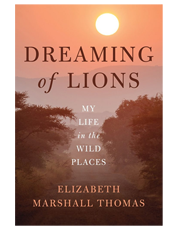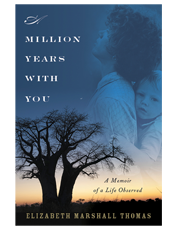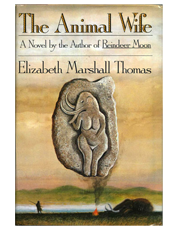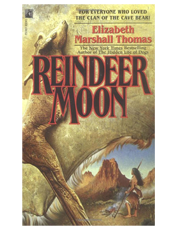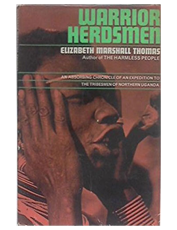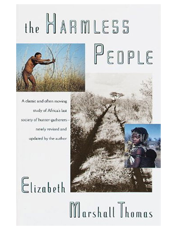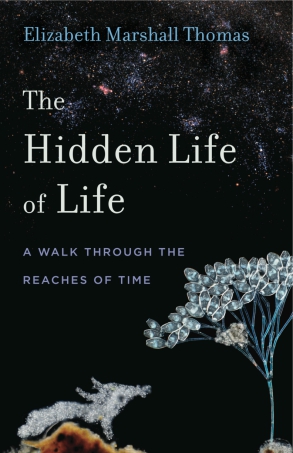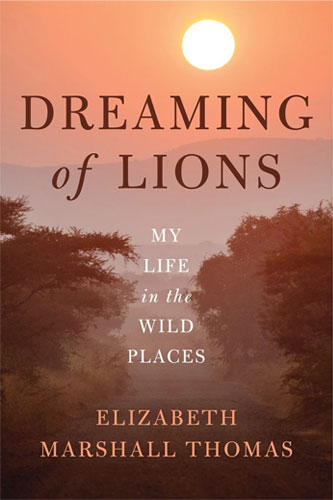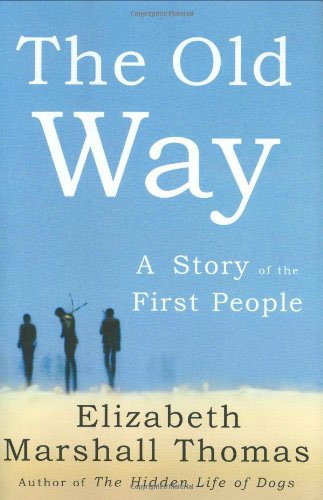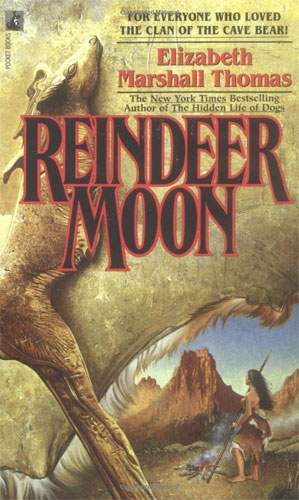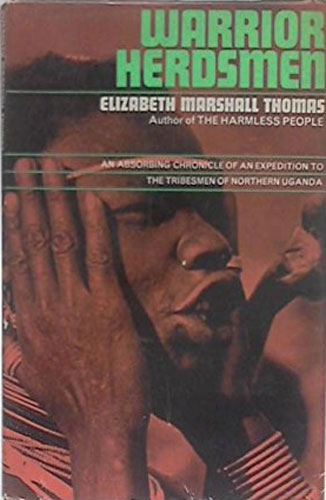The Harmless People
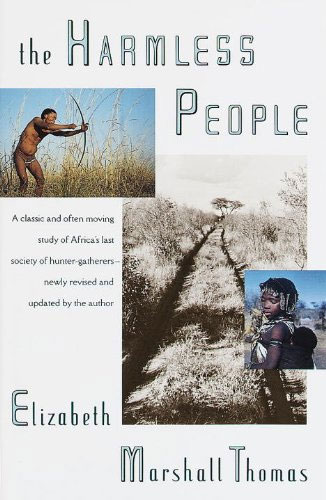 ISBN-13: 978-0679724469
ISBN-13: 978-0679724469
Publisher: Vintage
Publication date: 10/23/1989
Pages: 336
Product dimensions: 5.1 x 0.9 x 8 inches
Amazon
Barnes & Noble
Better World Books
Good Reads
Powells
The Harmless People
A Moving study of Africa’s last Hunter-Gatherers
In the 1950s Elizabeth Marshall Thomas became one of the first Westerners to live with the Bushmen of the Kalahari desert in Botswana and South-West Africa. Her account of these nomadic hunter-gatherers, whose way of life had remained unchanged for thousands of years, is a ground-breaking work of anthropology, remarkable not only for its scholarship but for its novelistic grasp of character. On the basis of field trips in the 1980s, Thomas has now updated her book to show what happened to the Bushmen as the tide of industrial civilization — with its flotsam of property rights, wage labor, and alcohol — swept over them. The result is a powerful, elegiac look at an endangered culture as well as a provocative critique of our own.
A study of primitive people which, for beauty of…style and concept, would be hard to match.” — The New York Times Book Review
“The charm of this book is that the author can so truly convey the strangeness of the desert life in which we perceive human traits as familiar as our own….The Harmless People is a model of exposition: the style very simple and precise, perfectly suited to the neat, even fastidious activities of a people who must make their world out of next to nothing.” — The Atlantic
From March to December, in the long drought of the year, the sun bakes the desert to powdery dry leaves and dust. There are no surface waters at all, no clouds for coolness, no tall trees for shade, but only low bushes and grass tufts; and among the grass tufts grow brown thistles, briers, the dry stalks of spiny weeds, all tangled into knots during the rains, now dry, tumbled and dead.
[expand title=”Show More”]The Kalahari would be very barren, very devoid of landmarks, if it were not for the baobab trees, and even these grow far from each other, some areas having none. But where there is one, it is the biggest thing in all the landscape, dominating all the veld, more impressive than any mountain. It can be as much as two hundred feet high and thirty feet in diameter. It has great, thick branches that sprout haphazardly from the sides of the trunk and reach like stretching arms into the sky. The bark is thin and smooth and rather pink, and sags in folds toward the base of the tree like the skin on an elephant’s leg, which is why a baobab is sometimes called an elephant tree. Its trunk is soft and pulpy, like a carrot instead of wood, and if you lean against it you find that it is warm from the sun and you expect to hear a great heart beating inside. In the spring, encouraged by moisture, these giants put out huge white flowers resembling gardenias, white as moons and fragrant, that face down toward the earth; during the summer they bear alumlike dry fruits, shaped like pears, which can be eaten. In the Kalahari there is no need of hills. The great baobabs standing in the plains, the wind, and the seasons are enough. [/expand]



